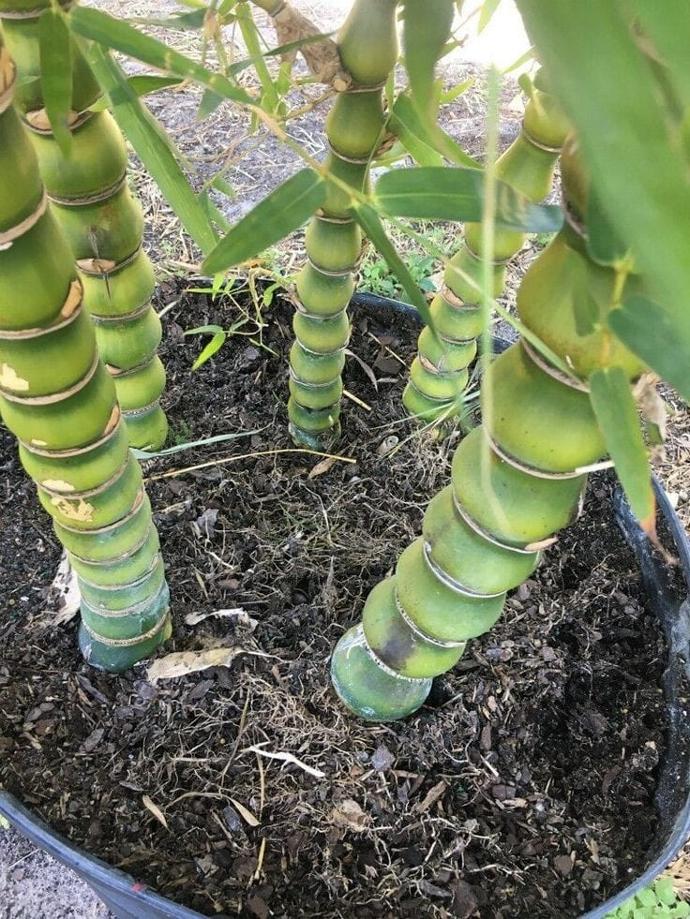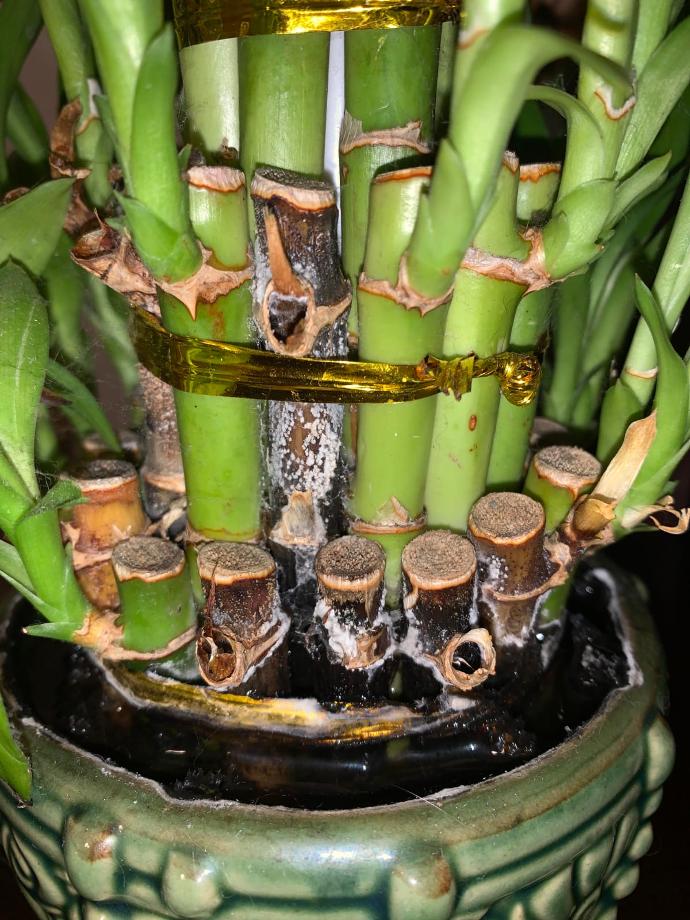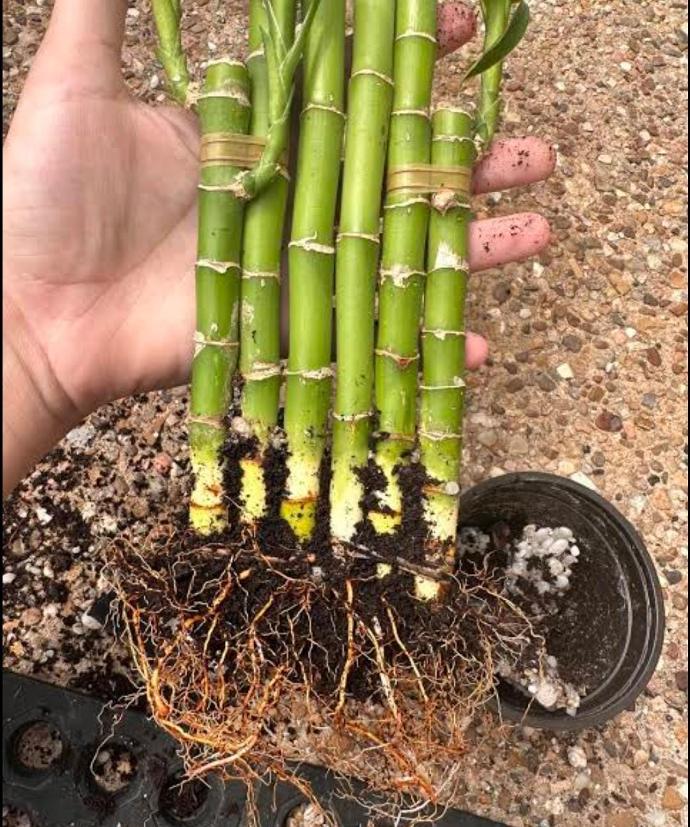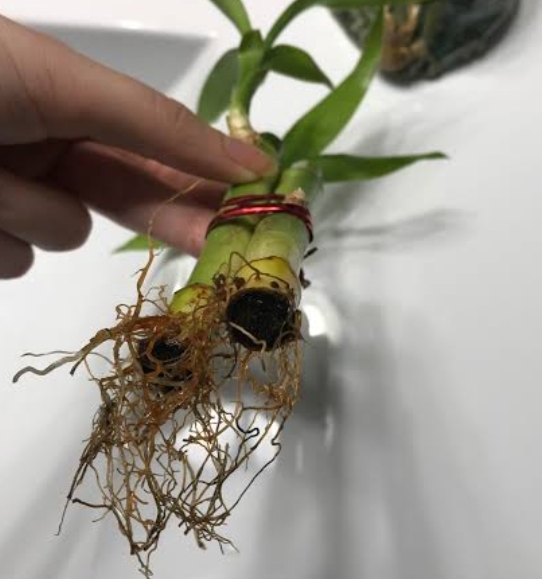Milky bamboo Plant
Milky Bamboo, possibly referring to a specific bamboo variety, may have varying care requirements. Generally, plant grows 40ft, well-draining soil with partial to full shade. Water consistently, and fertilize during the growing season. Pruning helps control its size and shape.
Habit
Bamboo
Height
3 to 5 m
Growth
Fast
Soil
Well-drained, Loamy
Shade
Full Sun
Moisture
Moist
Edible
Yes
Medicinal
Yes
Origin
Southeast Asia
Climatic Condition
Tropical, Subtropical
Temperature (°)
20°C to 30°C
Humidity (%)
60% to 75%
Potting media
50% Loam, 40% Sand, 10% Organic Matter
Fertilizers
Balanced Fertilizers
Watering
Regular watering
Plant Weight
5 to 10 kg
Flowering Time
Spring to Summer
Soil Ph level
6.0 to 7.0
Water Ph level
6.0 to 7.5
Soil EC
0.6 to 1.2 mS/cm
Yield Per Plant
15 to 25 kg per plant
NPK ratio
10:10:10
life Span
20 to 30 years
Health Benefits
Ornamental, Air-purifying
Suggested Grow Media or Potting Mix ?
50% loamy soil, 30% compost, 20% sand
Suggested Fertigation/Fertilizers
Fertilize every 4 weeks with a balanced fertilizer.
Common Diseases and Remedies
Root Rot , Sooty Mould .
It Affects the roots and flower parts of the stem , eventually kill the plant.
Maintain proper sanitation , Proper spacing .
HEALTH BENEFITS
- Rich in silica, supporting bone and joint health.
- Bamboo shoots are low in calories and aid digestion.
- Contains antioxidants that may help reduce cholesterol.
What Is An Milky Bamboo ?
Milky Bamboo, also known as Dracaena Sanderiana or Lucky Bamboo, is a popular ornamental plant that is said to bring good luck and prosperity in Feng Shui. Despite its name, it is actually not a bamboo, but a plant in the genus Dracaena. It is relatively easy to care for, requiring indirect light and regular watering, and will grow in both water and soil.

What Are The Different Types Of Milky Bamboo ?
1. Straight stem bamboo
2. Curly Bamboo
Curly bamboo has stems that twist and bend, creating an attractive and unique look.
3. Spiral Bamboo
Spiral Lucky Bamboo has spiral stems that are twisted and give it a visually appealing appearance.
4. Lucky Bamboo Tower
This type consists of several straight or twisted stems arranged vertically in a tall container, forming a tower-like structure.

How to Care Milky Bamboo Plants ?
1. Location
Milky bamboo is native to the rainforests of Africa and parts of Southeast Asia. Usually they grow in the understory of the forest, where they receive filtered sunlight and moderate humidity. As a houseplant, lucky bamboo prefers bright, indirect light and a warm, moist environment. You can place it near a window with sheer curtains or in a bright area out of direct sunlight. It is sensitive to temperature changes, so it is important not to place it in drafty or cold locations. Additionally, Lucky Bamboo grows in both water and soil, so it can be placed in decorative containers filled with water or planted in potting soil.
2. Sunshine
Milky Bamboo prefers bright indirect light. Place it in an area with plenty of natural light, but avoid direct sunlight, as this can cause leaf scorch. Ideally it should be placed near a window with transparent curtains or in a bright room with no direct sunlight. If natural light is limited, Lucky Bamboo can also grow under artificial light, such as fluorescent or LED grow lights placed several feet away from the plant. Overall, providing consistent and moderate lighting conditions will help your lucky bamboo plant grow.
3. Soil
Milky Bamboo can be grown in water or soil, depending on personal preference. If you want to grow Lucky Bamboo in soil, you will need to use well-drained potting soil. Mixtures for ornamental plants and tropical plants are suitable. You can also add perlite or sand to the soil to improve drainage. Lucky bamboo doesn't like damp conditions, so make sure the soil is always moist and not soggy. Allow the top 1 inch of soil to dry slightly between waterings. Check soil moisture levels regularly to ensure you are providing the right amount of water for your plants' needs.
4. Hydration
For milky bamboos that grow underwater, it is important to maintain water levels to keep them well hydrated. Use distilled or filtered water to avoid mineral deposits that can harm your plants over time. Keep the roots submerged in water at all times, but avoid getting water all over the trunk as this can cause it to rot. Change the water every 2-4 weeks to avoid stagnation and replenish nutrients. Also, if the water becomes cloudy or has a strange odour, please change it immediately to maintain the health of your lucky bamboo.

5. Nourishment
Bamboos are lucky enough to be grown in water usually do not require additional nutrients as they can obtain all the nutrients they need from the water. However, if you are growing your lucky bamboo in soil, you can use a balanced liquid fertilizer diluted to half strength. Fertilize once a month during the growing season (spring to summer). Avoid over-fertilizing as this can cause salts to build up in the soil and harm your plants. Always follow the instructions on the fertilizer label for best results. If you notice signs of nutrient deficiencies, such as: Yellowing leaves or other problems, you may need to adjust your fertilization habits or consider switching to a different fertilizer formulation.
6. Issues
Root rot can occur if plants are kept in contaminated water or if the roots are constantly submerged in water. Remove infected roots and change the water regularly. Lack of light and nutrients can inhibit growth. Consider moving the plant to a brighter area or fertilizing it if it's growing underground. Lucky bamboo is a relatively pest-resistant plant, but it may attract pests such as spider mites and aphids. To treat infestations, use insecticidal soap or neem oil.
What are the Benefits of Milky Bamboo ?
Like other houseplants, milky bamboo absorbs toxins such as formaldehyde, benzene, and trichlorethylene from the air and helps improve indoor air quality. Houseplants, including lucky bamboo, have been shown to have calming effects and help reduce stress and anxiety. In Feng Shui philosophy, lucky bamboo is believed to bring positive energy, prosperity, and good luck to a room when placed correctly. Lucky bamboo is relatively easy to care for and can be grown in a variety of indoor spaces with minimal care.

FAQs About Growing Milky Bamboo
1. How do I identify a milky bamboo plant ?
Milk bamboo typically has a tall, straight culm (stem) with prominent nodes along its length. The stems are usually green, but occasionally have patches of white powdery substance attached to them. The leaves are elongated, lance-shaped and alternate along the stem. Milk bamboo can grow very tall, reaching heights of 30 to 60 feet (9 to 18 meters) or more, depending on growing conditions.
2. When and how should I prune my milky bamboo ?
Pruning can be done year-round, but should be done during the growing season (spring and spring) to minimize stress on the plant. It is best to avoid heavy pruning during summer. The best time to prune is late winter or early spring, before new growth begins. Use a sharp, clean lopper or loppers to make clean cuts and minimize damage to the plant.
3. How does milky bamboo benefit the environment ?
Milky bamboo, like other types of bamboo, is a fast-growing plant that efficiently absorbs carbon dioxide from the atmosphere during photosynthesis. is. This helps curb climate change by reducing the levels of greenhouse gases in the atmosphere.
4. How tall does milky bamboo usually grow ?
Milk bamboo, also known as Milky Way Bamboo or Marmora vulgaris 'Vittata', typically reaches a height of approximately 6 to 12 meters when fully grown, depending on growing conditions and care.
5. Can milky bamboo plants tolerate poor lighting conditions ?
Milk bamboo plants can tolerate some low light conditions, but generally prefer bright indirect sunlight. In low-light conditions, growth may be slower and legier or develop smaller leaves. For optimal growth and health, it is best placed in a location with bright, indirect light.


